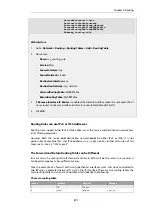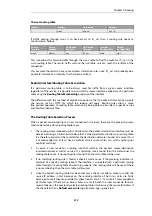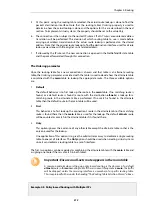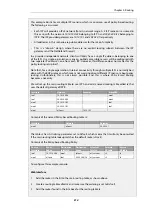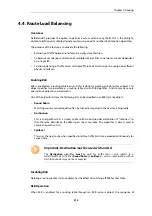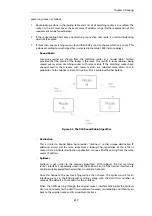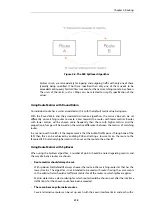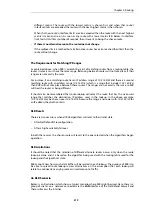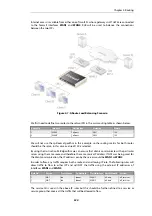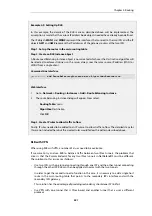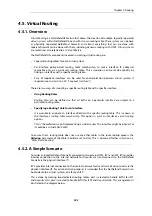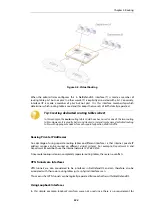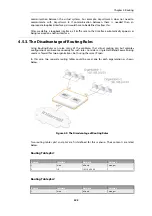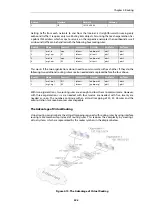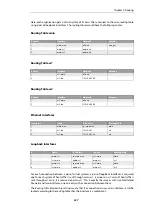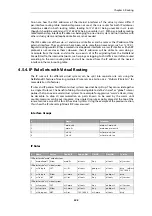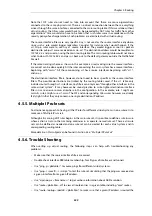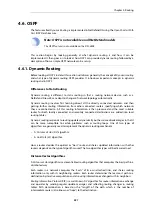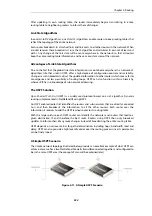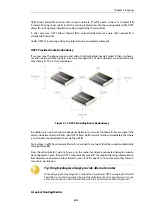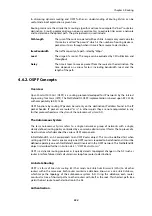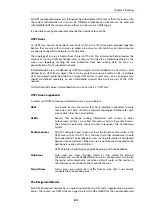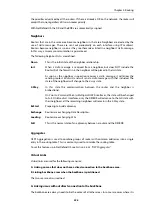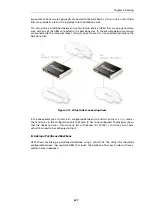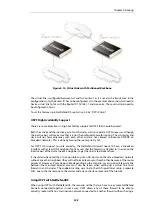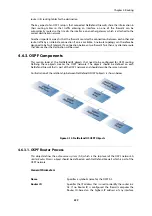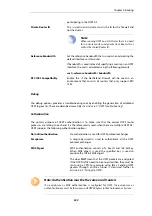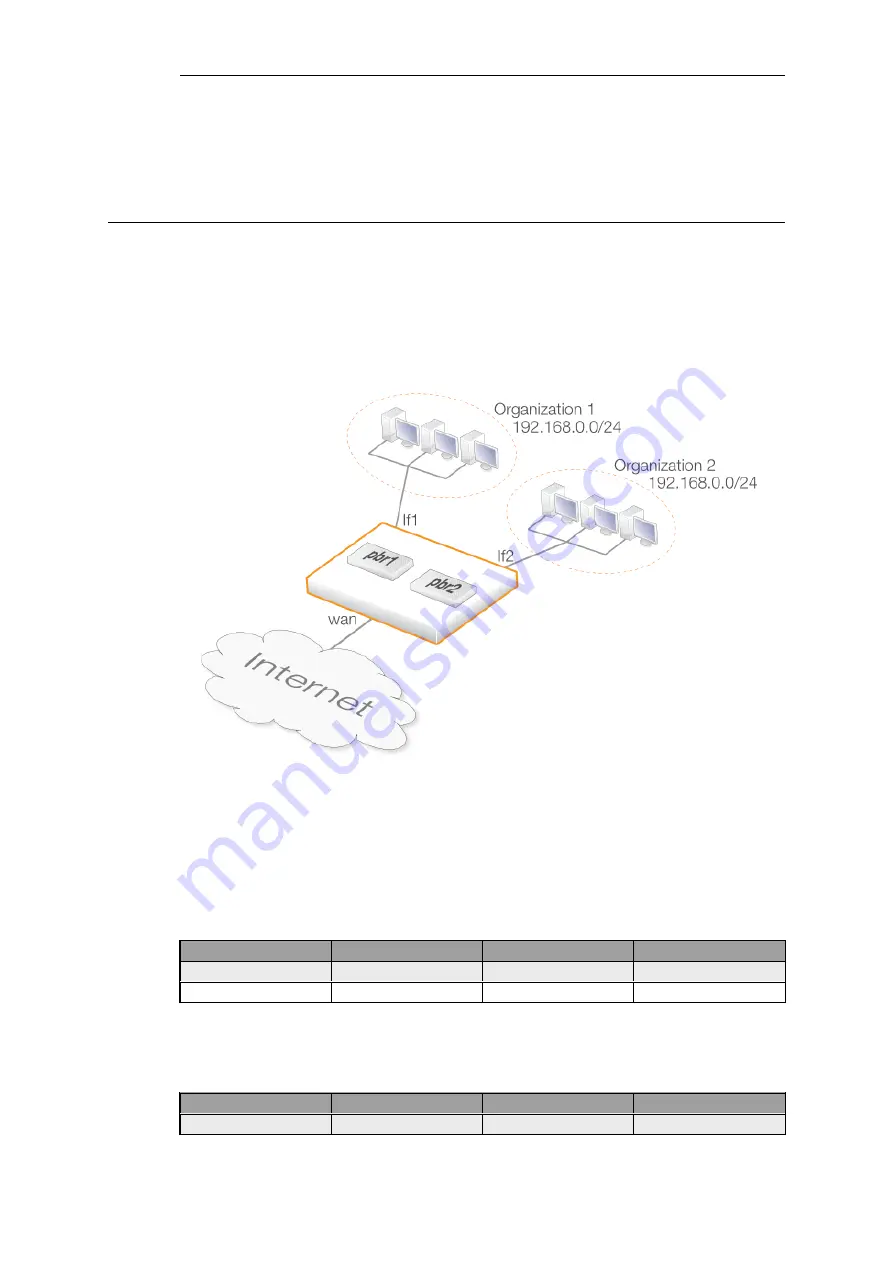
communication between the virtual systems. For example,
Department A
does not need to
communicate with
Department B
. If communication between them is needed then an
appropriate loopback interface pair would have to be defined to allow this.
After we define a loopback interface, all traffic sent to that interface automatically appears as
being received on another interface.
4.5.3. The Disadvantage of Routing Rules
Using Routing Rules can solve many of the problems that virtual routing can but complex
configurations can become unwieldy for such rules. Consider a single NetDefend Firewall being
used as a firewall for two organizations, both using the same IP span.
In this case, two separate routing tables could be used, one for each organization as shown
below.
Figure 4.9. The Disadvantage of Routing Rules
Two routing tables
pbr1
and
pbr2
are first defined for this scenario. Their contents are listed
below:
Routing Table pbr1
Route #
Interface
Network
Gateway
1
wan
all-nets
wan_gw
2
If1
192.168.0.0/24
Routing Table pbr2
Route #
Interface
Network
Gateway
1
wan
all-nets
wan_gw
Chapter 4: Routing
325
Summary of Contents for NetDefendOS
Page 30: ...Figure 1 3 Packet Flow Schematic Part III Chapter 1 NetDefendOS Overview 30 ...
Page 32: ...Chapter 1 NetDefendOS Overview 32 ...
Page 144: ...Chapter 2 Management and Maintenance 144 ...
Page 284: ...Chapter 3 Fundamentals 284 ...
Page 392: ...Chapter 4 Routing 392 ...
Page 419: ... Host 2001 DB8 1 MAC 00 90 12 13 14 15 5 Click OK Chapter 5 DHCP Services 419 ...
Page 420: ...Chapter 5 DHCP Services 420 ...
Page 573: ...Chapter 6 Security Mechanisms 573 ...
Page 607: ...Chapter 7 Address Translation 607 ...
Page 666: ...Chapter 8 User Authentication 666 ...
Page 775: ...Chapter 9 VPN 775 ...
Page 819: ...Chapter 10 Traffic Management 819 ...
Page 842: ...Chapter 11 High Availability 842 ...
Page 866: ...Default Enabled Chapter 13 Advanced Settings 866 ...
Page 879: ...Chapter 13 Advanced Settings 879 ...

